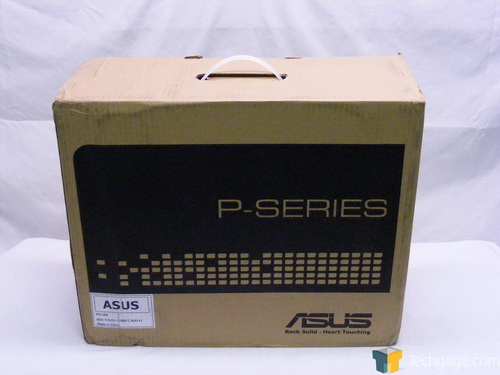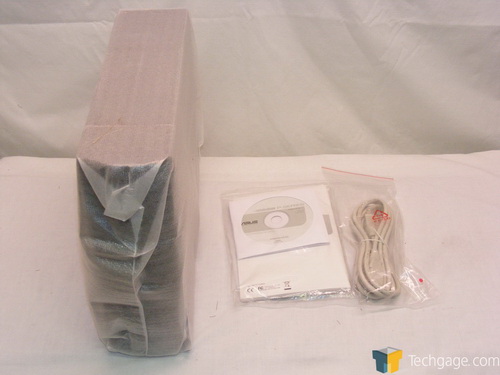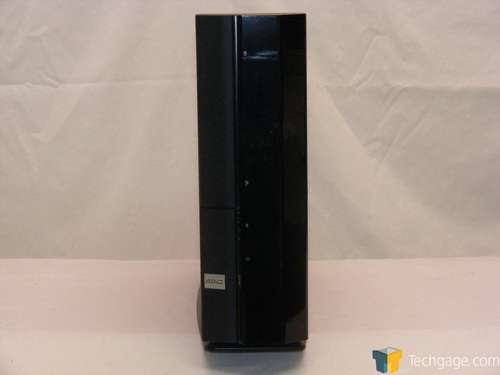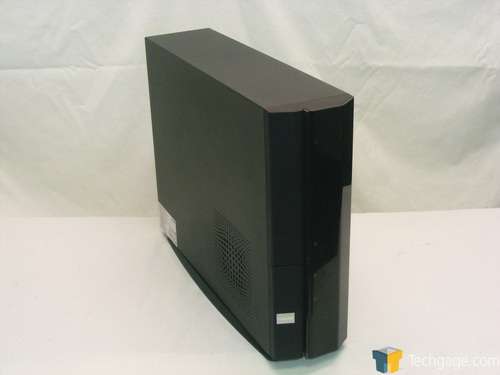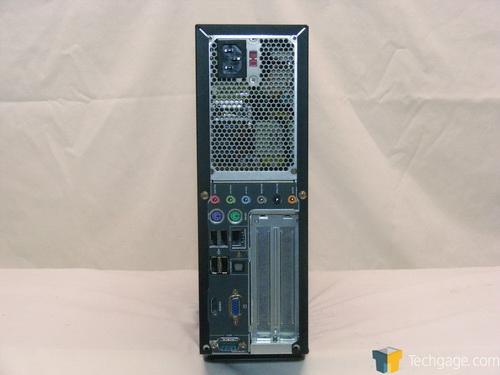- Qualcomm Launches Snapdragon 4 Gen 2 Mobile Platform
- AMD Launches Ryzen PRO 7000 Series Mobile & Desktop Platform
- Intel Launches Sleek Single-Slot Arc Pro A60 Workstation Graphics Card
- NVIDIA Announces Latest Ada Lovelace Additions: GeForce RTX 4060 Ti & RTX 4060
- Maxon Redshift With AMD Radeon GPU Rendering Support Now Available
ASUS P-Series AMD 690G Barebone PC
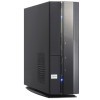
What if you could build a sub-$500 HTPC that was slim, fast, and capable, without the headache of picking bargain-barrel parts to accomplish your design goals? What if it had HDMI and 7.1 audio? With the help of their Pundit series, ASUS hopes to make barebones relevant again. Have they done it?
Page 2 – First Impressions
The ASUS Pundit P2-M2A690G barebone system comes in a fairly nondescript briefcase-sized carton that’s equipped with a carrying handle. Here’s what you get in the P2-M2A690G package: the P2 chassis with M2A-based 690G motherboard and power supply, a (beige?!) power cable, and a trio of CDs with driver software, utilities, and Phoenix Recover Pro, which offers system recovery capability even when Windows won’t boot up.
You also get a single right-angle SATA cable and a parallel-ATA ribbon cable for connecting drives. If you’ve got an SATA optical drive, you’ll need to source another right-angle SATA cable. You also get a 4-pin Molex-to-SATA power cable adapter.
The P2-M2A690G barebone system features an upright “book-style” design that’s slimmer than a typical micro-ATX tower, and would fit nicely on a desk or beside a HDTV. Three colors are offered – textured black, a vibrant white, and a bluish-tinged dark gray, which is what ASUS sent for review.
The front of the P-Series barebone’s case is dominated by a door that runs the full height of the case on the right side of the front bezel, which hides card reader slots, a pair of extra USB ports, and a single mini IEEE 1394 ‘Firewire 400’ port. A spring-loaded flap on the left side of the front bezel hides the optical drive tray, and the system’s power button and optical drive eject button are integrated into a vertical plastic bar along the inner edge of the door, that also integrates the power and HDD activity lights.
The case itself is less than four inches wide, and the entire cover of the case lifts off to allow access to the internals. Air intake occurs underneath the front and rear edges of the case, and a large air intake on the left side of the unit feeds cool intake air directly to the CPU fan. The case is solidly built, and reassuringly heavy, even without the CPU, memory, or drives installed.
The rear of the P-Series barebone case is dominated by the PSU’s exhaust vent at the top, which handles all exhaust airflow for the case. The P2-M2A690G offers an impressive complement of I/O ports, including four USB ports, full 7.1-channel analog audio inputs and outputs, an optical Toslink digital audio output, a HDMI port, and legacy PS/2, Serial, and VGA ports. With connections for older hardware, this barebone PC makes just as much sense for a business-class desktop PC as it does for a rudimentary home theater PC. The slim case also offers room for two expansion cards.
Specifications (Source: ASUS)
- CPU: AMD Socket AM2, 1000 MHz HTT/800MHz RAM
- Chipset: AMD 690G Northbridge, AMD SB600 Southbridge
- Memory: 2x DIMM, DDR2 800/667/533, up to 4GB supported
- Expansion Slots: 1x PCI, 1x PCI-e x1
- Graphics: Integrated ATI Radeon™ 1250
- IDE: 1x ATA 100
- SATA: 2x SATA II
- LAN: 10/100/1000 Mbps, single controller
- Audio: Onboard Realtek ALC883, Intel Azalia 8 Channel HD Audio
- Drive Bays: 1x 3.5″ Internal, 1x 5.25″ External
- Front Panel Ports: 1x Headphone, 1x Microphone, 1x IEEE 1394, 2x USB 2.0, 1x 4-in-1 Card Reader (MS, MS Pro, MMC, SD), 1x CF card reader
- Rear Panel Ports: 1x D-Sub, 1x HDMI, 8-channel (7.1) audio output, Line-in, Mic-in, 1x PS/2 Keyboard, 1x PS/2 Mouse, 1x RJ-45 LAN, 1x Toslink S/PDIF Output, 1x Serial Port, 4x USB 2.0
- Power Supply: 200W PFC
- OS Support: Windows Vista/XP
- MB Features: ASUS CrashFree BIOS2, ASUS CrashFree BIOS3, ASUS Ez Flash, ASUS My Logo2, ASUS My Logo3, ASUS Q-Fan, AMD Cool n’ Quiet, AMD Live!, Phoenix Recover Pro
- Accessories: CPU Cooler
Now that we’ve taken a look at the ASUS P2-M2A690G barebone system’s features from the outside, let’s delve into some deeper details of the hardware and internal layout.
Support our efforts! With ad revenue at an all-time low for written websites, we're relying more than ever on reader support to help us continue putting so much effort into this type of content. You can support us by becoming a Patron, or by using our Amazon shopping affiliate links listed through our articles. Thanks for your support!




